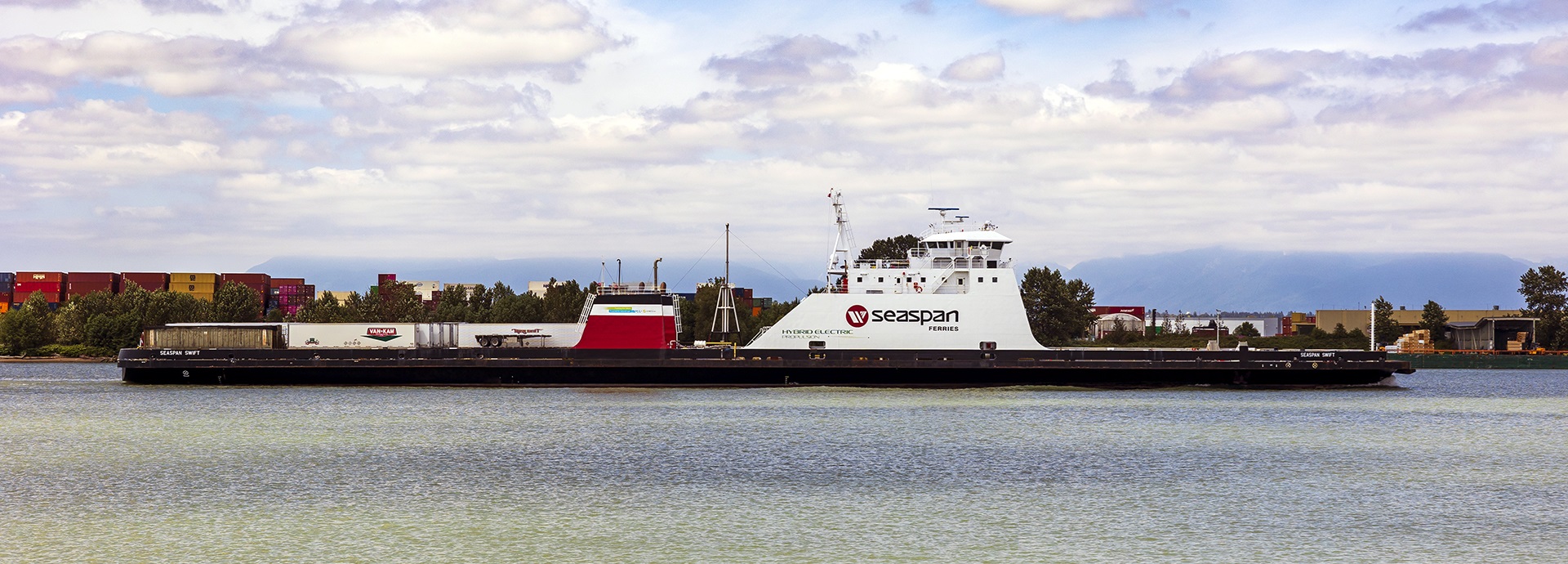

How did Seaspan Ferries take the easy route to 90% less carbon intensity?
Seaspan Ferries Corporation’s cargo vessels provide a vital link between the Canadian cities around Vancouver and neighbouring Vancouver Island. As part of its commitment to reducing air emissions and preserving the pristine local environment, Seaspan Ferries upgraded the engine control software and operational profile of its hybrid ferries Reliant and Swift, slashing the well-to-wake carbon intensity of the vessels by a colossal 90%.
Seaspan Ferries Corporation (SFC) operates around the clock, seven days a week, and is by far the largest RoRo cargo carrier to and from Vancouver Island. The company has already gone a long way to reduce the environmental impact of its operations – for example, by adopting electrified port equipment and shore power systems as well as through its support for local environmental initiatives. In its latest move to reduce the carbon intensity of its vessels, SFC made three changes to its hybrid ferries Reliant and Swift to make the vessels even more environmentally friendly.
1 – Installing a greenhouse gas reduction package
The vessels’ engines have been upgraded with the Wärtsilä 34DF greenhouse gas (GHG) reduction upgrade. “This simple and cost-effective control software upgrade can reduce the greenhouse gas emissions of any vessel powered by Wärtsilä 34DF engines,” explains Mark Keneford, General Manager, Sales, Canada, Wärtsilä. The upgrade reduces unburned methane emissions – known as methane slip – by reducing the charge air pressure and air-fuel ratio at key load points. The GHG reduction package also included engine low load optimisation, which further reduces methane slip by disabling some of the engine cylinders at low loads and allowing others to take higher loads.
2 – Switching to renewable fuel
The Reliant and Swift are both powered by two Wärtsilä 34DF engines, a medium-speed 4-stroke marine engine with fully fuel-flexible operation. The Wärtsilä 34DF engines onboard the Reliant and Swift can run on LNG, MDO or biofuels. Seaspan took advantage of this fuel flexibility by switching to 100% biodiesel for the pilot fuel and renewable LNG for the main fuel when it is available. This switch dramatically reduced the vessel’s carbon footprint in the process.
3 – Upgrading the battery
SFC upgraded the vessels’ onboard battery capability to reduce engine operating hours. The upgrade made it possible to switch from running two engines at low load, which increases methane slip, to running one engine at a higher load, which further minimises methane slip and other emissions.
Impressive results with a real impact
These three steps reduced the well-to-wake carbon intensity of the Reliant by an impressive 90%. The University of British Columbia confirmed the reduction in a published paper. “We’re really happy with these results,” says Harly Penner, Vice President, SFC. “The improvements fit with our vision of reducing the carbon footprint of our operations while continuing to improve the quality and efficiency of our services for customers in British Columbia.”
Wärtsilä and SFC are continuing to collaborate on solutions to further reduce the GHG impacts of the vessels’ operations. Recently, the Wärtsilä SmartDock autonomous docking system was commissioned onboard the Reliant and Swift to increase safety and improve operational efficiency. These vessel upgrades are all part of Seaspan’s strategy. Naturally, Wärtsilä will be on hand to offer support and expertise as Seaspan continues its decarbonisation journey
Learn how you too can cut the carbon intensity of vessel operations with Wärtsilä engine upgrades to reduce GHG emissions.
Further reduce the carbon intensity of two hybrid ferries.
Switch to renewable fuels, install the Wärtsilä greenhouse gas reduction package and upgrade the batteries.
A 90% reduction in the well-to-wake carbon intensity of the ferries’ operations.




